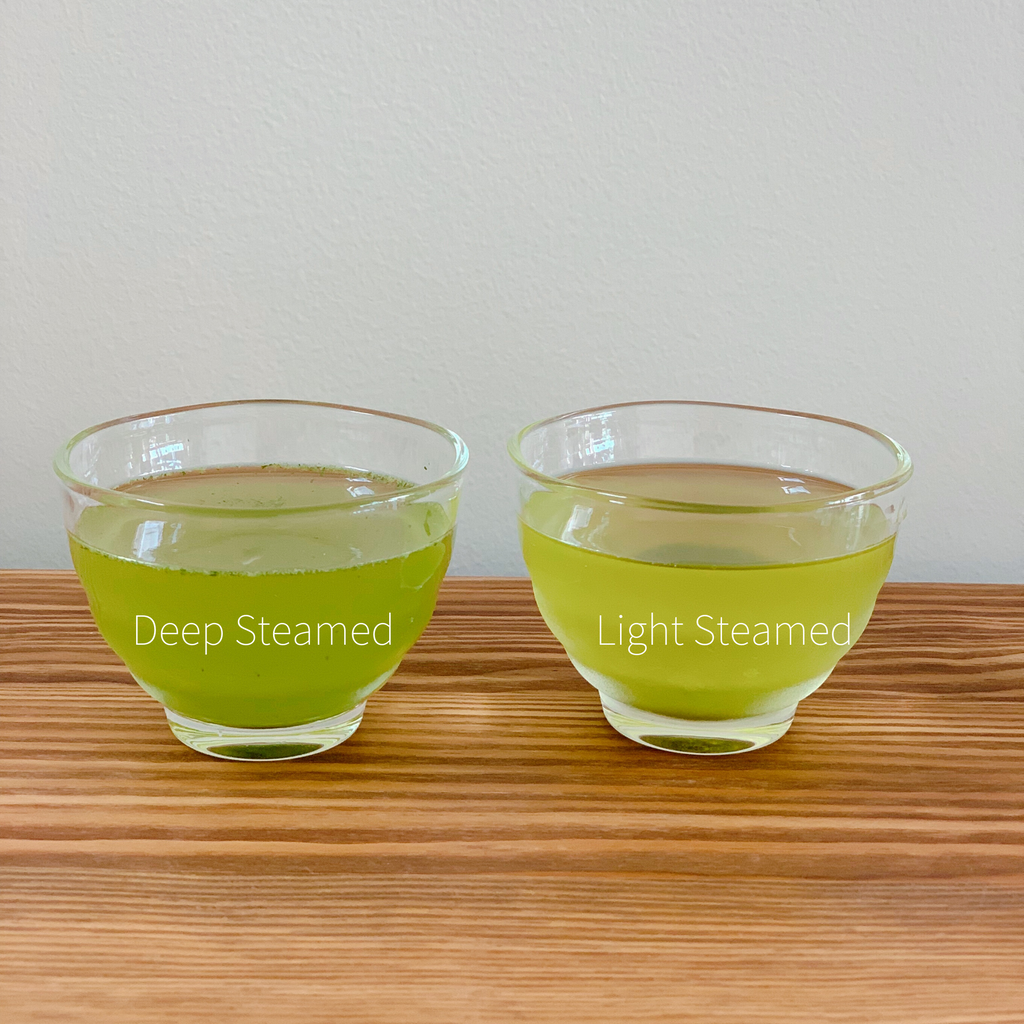Japanese green tea has a process of "steaming" immediately after picking tea leaves. If the tea leaves are left as it is after picked, the fermentation progresses and the green tea changes to oolong tea and black tea. The enzyme that promotes fermentation can stop its function by being heated. And this "steaming" process has another role. By changing the steaming time, two types of tea can be made, light steamed tea and deep steamed tea.
1. Light Steamed Sencha (Asamushi Sencha)
Light steamed tea is made by steaming picked tea leaves (raw leaves called Namaha) for about 30 to 40 seconds. Also called regular steamed tea. It was light steaming method that has been used as a standard manufacturing process nationwide since hundreds of years ago. Around 1738 (late Edo period) , this process was established in a way close to the current method, by a man named Soen Nagatani who lived in Ujitawara-cho, Kyoto Prefecture. The steaming time is set to minimum just to stop the function of the enzyme, so the original aroma and taste of the tea leaves are most likely to remain in this method.
Conversely speaking, if tea leaves contain a negative factor such as a strong bitterness or astringency resulted in some problems during cultivation, that part is also left behind. When brewing, the most significant characteristic is the light color of water that is clearer than that of deep-steamed tea(Right side in the photo). In addition, the cultivar specific aroma or unique aroma generated through cultivation process such as mountain scents or seaweed-like scent can be strongly represented. As for the taste, it represents clear taste of each sweetness, umami, bitterness and astringency, and if it matches your taste, light steamed tea will give you a delightfully satisfying experience.
2. Deep Steamed Sencha (Fukamushi Sencha)
Deep steamed tea has a steaming time of 2 times that of light steamed tea, for about 60 seconds. Due to the longer steaming time, heat and water soak deeply into the tea leaves, and the tea leaves tend to lose their shape during the subsequent rolling process. As a result, when brewed, fine particles of tea leaves are contained in the water. The color of water is vivid and rich, with a dark green color (Left side in the photo). The deep steaming method was developed in the central part of Shizuoka prefecture in the 1960s. Therefore, it is very common in plain area in Shizuoka, but it is also produced in Mie Prefecture, Kyushu (Sourthen region) including Kagoshima, and Kyoto Prefecture. Originally, deep steaming process was developed to reduce too bitterness resulted from long daylight hours in the plain topography. It was the process to offset “the negative elements”, however that is a past story. Many improvements have been made into tea leaves and process by the tireless efforts of tea farmers. Now, deep steaming teas have many positive aspects, and delicious teas are being made utilizing the characteristics of it’s own. There is also "special deep steamed tea" that has a extra longer steaming time than standard deep steamed tea, which shows more unique flavor. The high quality deep steamed tea has a clear soup-like taste, and you can enjoy the smooth taste without too thick profile. It's truly unique to deep steamed tea.

